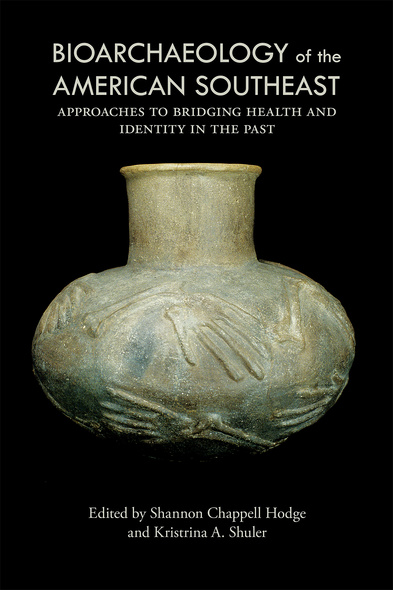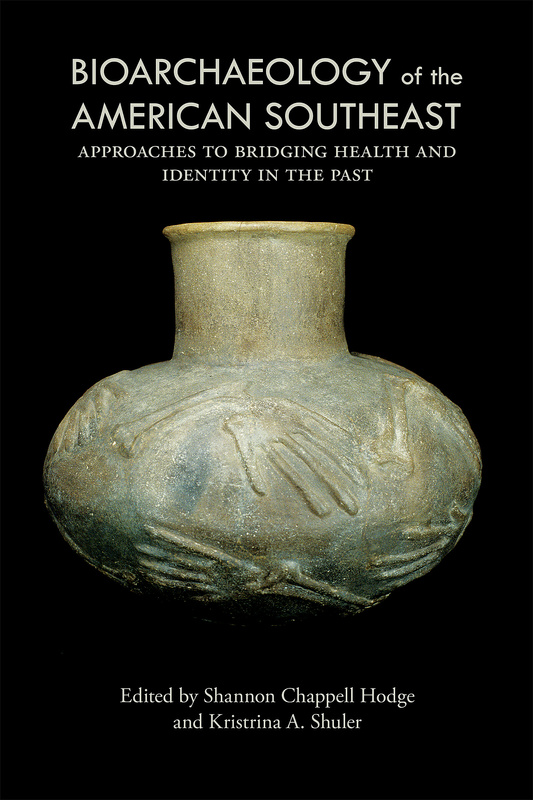
328 pages, 6 x 9
58 B&W figures - 7 maps - 32 tables
Hardcover
Release Date:25 Sep 2018
ISBN:9780817319915
Bioarchaeology of the American Southeast
Approaches to Bridging Health and Identity in the Past
University of Alabama Press
A timely update on the state of bioarchaeological research, offering contributions to the archaeology, prehistory, and history of the southeastern United States.
Building on the 1991 publication What Mean These Bones? Studies in Southeastern Bioarchaeology, this new edited collection from Shannon Chappell Hodge and Kristrina A. Shuler marks steady advances over the past three decades in the theory, methodology, and purpose of bioarchaeology in the southeastern United States and across the discipline. With a geographic scope that ranges from Louisiana to South Carolina and a temporal span from early prehistory through the nineteenth century, the coverage aims to be holistic.
Bioarchaeology of the American Southeast: Approaches to Bridging Health and Identity in the Past is organized into two main parts. The first, “Context and Culture History in Bioarchaeology,” focuses on the fundamentals of archaeology—figuring out who lived at an archaeological site, when they lived there, what they did, and how they lived their lives.
This builds the framework that allows archaeologists to answer deeper questions, such as the ones addressed in the second part, “Social Identities in Bioarchaeology.” Here contributors explore questions of identity, ethnicity, gender and the status of women, social status, class, power and exploitation, migration, and conflict. These chapters implement and contribute to anthropological theory and showcase improved methods, such as innovative statistical analyses, and incorporate newer technology, including a DNA and geographic information system applications.
Building on the 1991 publication What Mean These Bones? Studies in Southeastern Bioarchaeology, this new edited collection from Shannon Chappell Hodge and Kristrina A. Shuler marks steady advances over the past three decades in the theory, methodology, and purpose of bioarchaeology in the southeastern United States and across the discipline. With a geographic scope that ranges from Louisiana to South Carolina and a temporal span from early prehistory through the nineteenth century, the coverage aims to be holistic.
Bioarchaeology of the American Southeast: Approaches to Bridging Health and Identity in the Past is organized into two main parts. The first, “Context and Culture History in Bioarchaeology,” focuses on the fundamentals of archaeology—figuring out who lived at an archaeological site, when they lived there, what they did, and how they lived their lives.
This builds the framework that allows archaeologists to answer deeper questions, such as the ones addressed in the second part, “Social Identities in Bioarchaeology.” Here contributors explore questions of identity, ethnicity, gender and the status of women, social status, class, power and exploitation, migration, and conflict. These chapters implement and contribute to anthropological theory and showcase improved methods, such as innovative statistical analyses, and incorporate newer technology, including a DNA and geographic information system applications.
Bioarchaeology of the American Southeast adds new data from bioarchaeological investigations in the Southeast while engaging emerging and innovative theoretical approaches and new technologies. The resulting set of discussions gives new insights about those who lived in the region before modern times. The book is well suited for classroom use and will be appreciated by professional bioarchaeologists and others interested in the American Southeast.’
—American Antiquity
'Bioarchaeology of the American Southeast compares favorably with other Southeastern-focused bioarchaeology volumes that survey the various archaeological populations in the American Southeast. It belongs on bookshelves next to volumes such as Bioarchaeological Studies of Life in the Age of Agriculture: A View from the Southeast and What Mean These Bones? Studies in Southeastern Bioarchaeology.'
—Michelle D. Hamilton, associate professor of anthropology at Texas State University
A wonderful successor to What Mean These Bones?, Bioarchaeology of the American Southeast demonstrates the current diversity seen in theoretical approaches in the discipline, from traditional population-based analyses of health to more socially focused studies of the individual. It will be a valuable addition to courses in both bioarchaeology as well as Southeastern prehistory.'
—Marie Danforth, professor of anthropology at the University of Southern Mississippi
Shannon Chappell Hodge is an associate professor of anthropology at Middle Tennessee State University.
Kristrina A. Shuler is an associate professor and director of anthropology at Auburn University.
Kristrina A. Shuler is an associate professor and director of anthropology at Auburn University.





